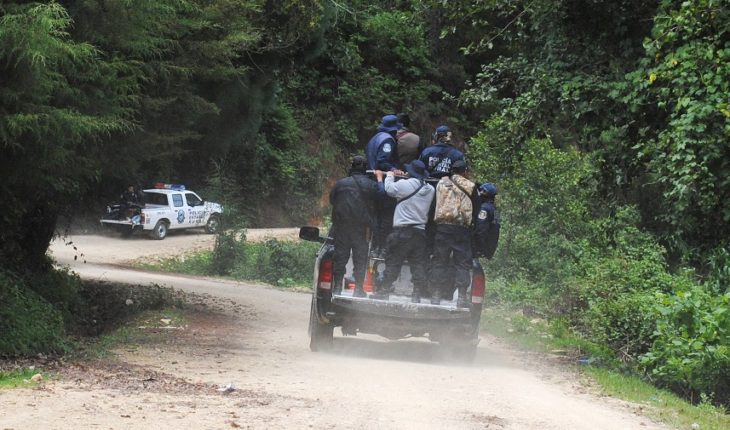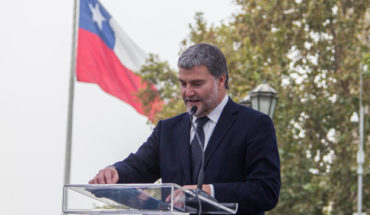At around 4 p.m. on Sunday, June 30, detonations began to the village of El Naranjo, in the Sierra de Guerrero. The shots came from the hills surrounding the community. Six families, from the houses closest to the shooting area, fled to the municipal headwaters. The other settlers, about 500, barricaded theself in their homes and began to repel the attack.
This was reported to Animal Political activists from the José María Morelos y Pavón Center for Human Rights (Centro Morelos), and displaced persons from other communities, who received the alert messages from their friends and family from El Naranjo, and surrounding areas.
In this region of Guerrero there has been a dispute between organized crime groups fighting control of territories since 2013, where they have interests linked to the cultivation and transfer of drugs, but also to the exploitation of mines and forest resources. In the midst of these lawsuits, there are civilians.
“Those who are shooting are from the same group that displaced us, what they want is to get people out to take control of the territory. The aggression was, as in our communities, against civilians who do not get involved with anyone,” says one of the displaced people from a village above, whom we will call Marcos for safety, and who spent 39 days on the seed, along with 300 other people, outside National Palace in Mexico City, to demand from the federal government conditions for the return to their communities.
Read: Displaced from Guerrero denounce that government forced them to rent houses and has not paid them
The displaced person points out that the attack on El Naranjo is a consequence of the unenforced security measures agreed in the agreement signed between them and Alejandro Encinas, Undersecretary for Human Rights, Population and Migration, of the Ministry of the Interior ( Segob), and by which they agreed to return to Guerrero and settle in Chichihualco.
“Just in El Naranjo it had been agreed that a security point would be placed, to prevent the armed group from wanting to enter that village and then move to the municipal head, where we are,” Marcos says.
The agreement referred to included that the Undersecretariat for Human Rights of the Segob should request the Secretariat of Security and Citizen Protection to establish a perimeter of protection for them, with three surveillance points towards the mountains and towards Chilpancingo: in the Orange, the Carrizal and the Quebrador.
The undersecretariat of Encinas, Marcos says, has already fulfilled the part of humanitarian aid based on the agreement: support to pay housing rent and food, among others, “but the checkpoints were not established. If there had been one in El Naranjo, the armed group would not think about attacking the village, but no action has been taken on the security strategy.”
Manuel Olivares, of Centro Morelos, points out that this breakthrough is, in fact, a kind of challenge at the arrival of the National Guard in Guerrero. “This armed group had been announcing that it would take more villages, they want to control the whole area to the capital, Chilpancingo, and they said they will not allow the Guard to enter.”
Alejandro Encinas’ communication office assured Animal Político that they requested since April that the Federal Police provide security to the inhabitants of the municipality of Leonardo Bravo, to which El Naranjo belongs.
As for whether they will now request the presence of the National Guard, they only responded that “that definition will be made in the security cabinet.” Animal Político requested an interview with the Ministry of Security and Citizen Protection to know his position, but until the closing of the edition he did not get an answer.
They won’t come out.
The people of El Naranjo, the interviewees said, are prepared to try to repel the aggression. The villagers already knew that the organized crime group could try to advance towards its people, on their way to take the municipal head, Chichihualco.
Faced with attacks on the towns above, such as Filo de Caballos, Los Morros and Campo de Aviación, those from El Naranjo decided that they would not leave their homes. “They’ve seen what happened to us. We got out and lost everything. Those who attacked us have stolen what we had and we cannot go back to our houses, so they have decided that they will defend themselves, in addition because they are a very united community, very organized. Even the families who had fled were back. They are determined to resist,” Marcos says.
Thanks to that, he says, so far the armed group has not been able to enter El Naranjo. Since Sunday, some 400 men have organized the defense of the village. Cross-fire with the armed group was proloathed until the morning of Monday, July 1, with no death toll reported.
After that the detonations have not been heard, but the interviewees report that the attackers remain in the hills, lurking in the community. “We’re not sure, but there must be about 600 gunmen around El Naranjo, at least that’s what the people over there tell us, because no one can come in and see what’s going on,” says Manuel Olivares, director of Centro Morelos.
At a press conference, the village commissioner denied public security supporting the population, as the government reported on Tuesday morning, “there is no one in the village, the only ones who are the village policemen, but why do they get into problems them?” He also said the petition to the government is either military or National Guard surveillance in the three-cross ed stretch of El Naranjo.
In an interview with Animal Político, Florencio Salazar Adame, secretary general of government of the state of Guerrero, confirms that Sunday and Monday shots were fired, from the nearby hills, at the community of El Naranjo. But he claims it’s a lie that the authorities aren’t acting.
“The state police, the rural police are protecting the area, not only to the community itself, but to nearby places where there may be groups of attackers, we have even informed the army. There has been a state government response around the security issue.”
The official also says that it is a lie that there are men surrounding El Naranjo, and stresses that there is a constant presence of the police and the army to protect the population, which has indeed been left in the midst of disputes between criminal groups, such as him llama.
Political Animal: Will there be police and army surveillance in El Naranjo?
Florencio Salazar: Surveillance is given would be. We can’t talk about it being a permanent surveillance because it’s thousands of communities. But there are zones, by region, surveillance that allows immediate approximation when there is a problem that puts people’s lives at risk.
AP: How far away is the nearest point where there are police or military?
FS: Police recently moved there. I don’t know exactly what your location is, but it must necessarily be in proximity, just like the army.
AP: Will the National Guard arrive in the area these days?
FS: All these issues need to be coordinated with the respective command and the State Security Secretariat, and when there are the necessary agreements and the strategies are proposed, they will go to the areas of greatest conflict in the state.
AP: Can the attack on El Naranjo be a response to the arrival in Guerrero of the National Guard?
FS: I don’t think so, unfortunately it is one of the actions that have been given over time, just like in other parts near El Naranjo.
What we do in Animal Político requires professional journalists, teamwork, dialogue with readers and something very important: independence. You can help us keep going. Be part of the team.
Subscribe to Animal Politician, receive benefits and support free journalism.#YoSoyAnimal
translated from Spanish: Villagers denounce armed group advance in Guerrero
July 4, 2019 |





